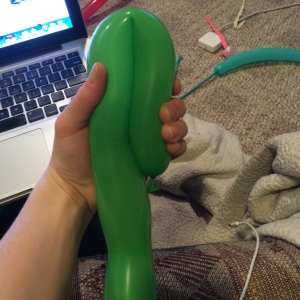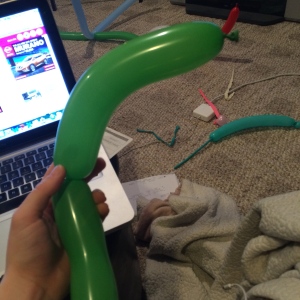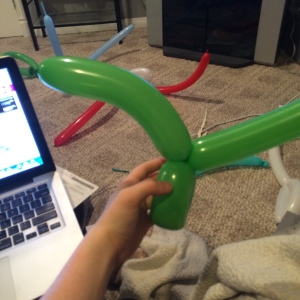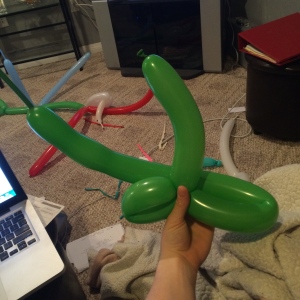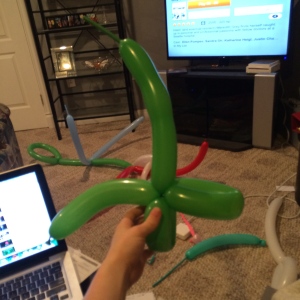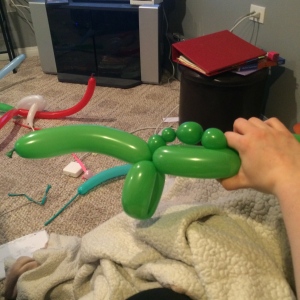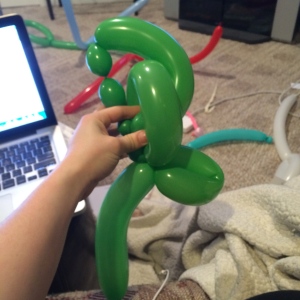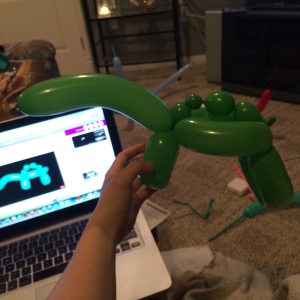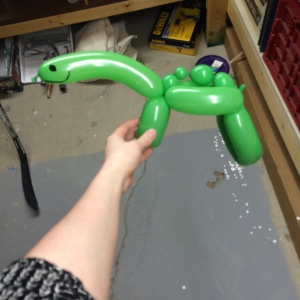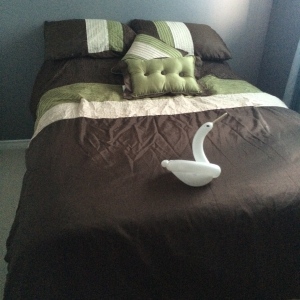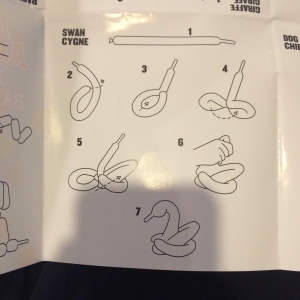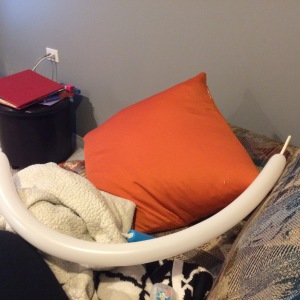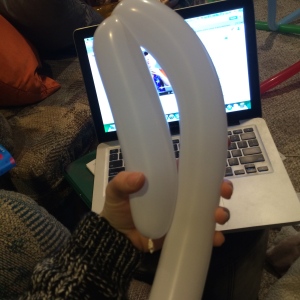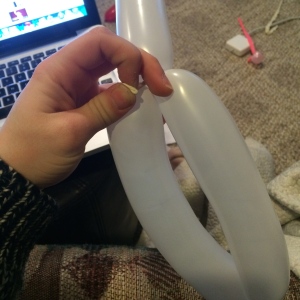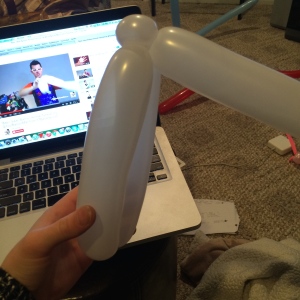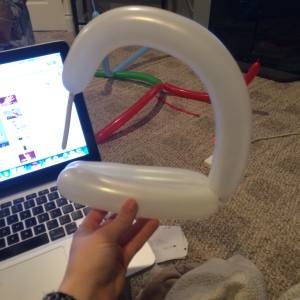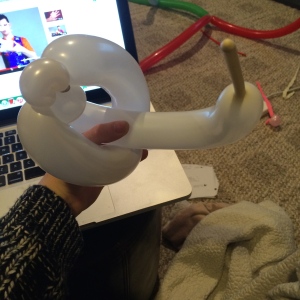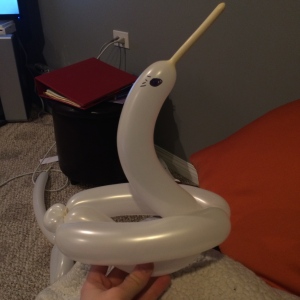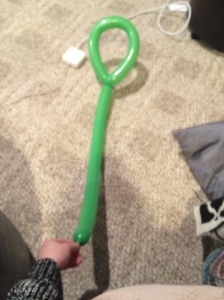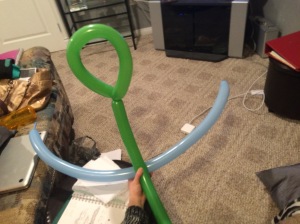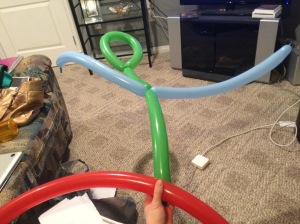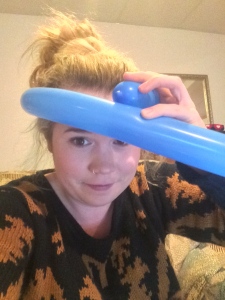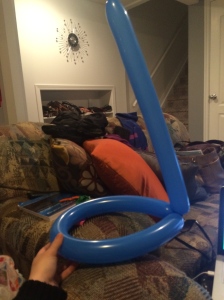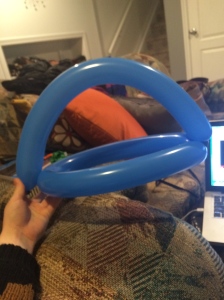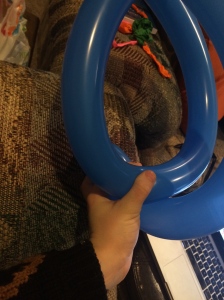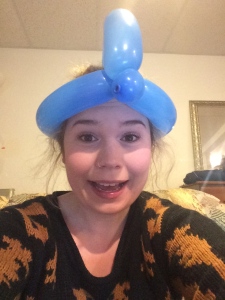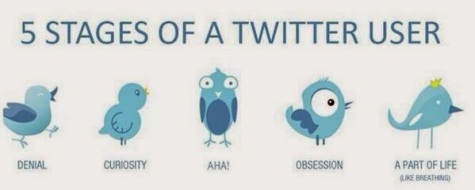Look out! There’s a Dinosaur on the Loose!!!
This Dinosaur balloon animal was by far one of the hardest animals that I have made thus far. There was a bunch of different twists, bubbles to hold where my hands weren’t big enough to keep in place, and things that wouldn’t stay in place when they were supposed to.
To learn this Dinosaur, I used the same website as I did to learn the swan, found here, I used a youtube video (below), which was very hard to understand/learn from as there was no talking was very fast paced and loud music playing, and I did a little improvising of my own to make it work when I didn’t understand how to do what the instructions said.
Step 1: Blow up the balloon and leave about a hands length of air in at the end. The end of the balloon where the knot is, fold the balloon down so that is parallel against the stem to whatever length you desire. Squeeze the folds together for about a minute, this will again create a little bend/curve in your balloon which will be the head/neck of your dinosaur. After you are finished squeezing and have the head/neck formed, create a twist at the bottom and and hold it in place.
Step Two: Where you made the twist and are holding it in place, fold the balloon down so that it is parallel agains the stem once again, this time keep folding it down a little further so that you have about two inches of balloon above the twist (you are forming the legs). Where the balloon is twisted from earlier, you are going to take that part of the balloon (where my finger is) and you are going to twist the balloons together (Just like we did when we created our dog).
Step Three: To form the body, fold the balloon again towards the face/neck/feet. Where the fold of the body meets up with the middle twist of the legs and neck, you are going to twist the body into that same twist and lock it into place (Your animal will look like the second picture). From here, you will have the stem sticking straight up.
Step Four: This step you are going to create the “spikes”. This part is very tricky as the circles are not locked in place. You can make as many bubbles as you want, as long as it fits the length of the body that you formed. To create this, you are just going to choose the size of bubble you want, make a twist, and then repeat. After you are done creating your spikes, you have to fold the rest of the stem underneath the body and push it through the middle of the hole.
Step Five: Where the two meet, form another lock twist to make the second pair of legs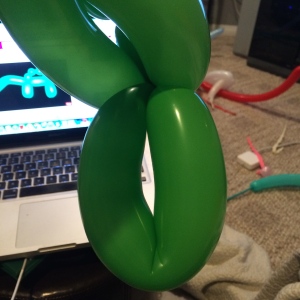
Step Six: Volia! Your Dinosaur, you can draw on some eyes and a smile and you’re good to go
